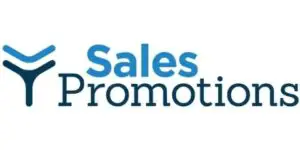Table of Contents
*This post may contain affiliate links. As an Amazon Associate we earn from qualifying purchases.
Once you identify a market niche, use sales promotion to activate customer segmentation strategies and motivate purchase action. Before the launch of today’s fantastic segmentation technology, marketers would simply identify a group of people that had a need and introduce them to their solution. While this simple definition of marketing hasn’t changed, they way we reach consumes certainly has.
The Early Years of Segmentation Strategy
In the good old days a customer segmentation strategy consisted of developing a list of consumers that may need your product. The criteria was simple, such as geography and general income information. Overlaying the initial list with other lists would fine tune the target population.
For example a window replacement company identified new home purchasers within their county. To improve their chances for a response, they targeted areas with older homes and higher incomes.

A bounce back response card, offering a promotional product for requesting a quote, was included to generate leads.
I actually developed such a program offering the latest retractable tape measure as the reward. A lot of work for a few leads, but those who took the time to respond were genuinely interested and the closing rates were high.
This practice is still done in many small businesses and start-ups. However, the list development and marketing channels used have gotten more sophisticated, enabling business to target specific customers more efficiently.
Making An Emotional Connection
“People don’t buy for logical reasons, they buy for emotional reasons” Zig Ziglar
To drive the message home marketers need to appeal to the psychological aspects of why people buy. For the new window installation example, ‘your family will be safer, warmer and more secure’ appeals to the hidden needs to be loved. Improving the looks and appeal of your home appeals to the hidden needs of Emotional Security and Ego Gratification.
The free promotional product offer was introduced on the outer envelope, call-out box and the bounce-back card to bring the elements together, support a call-to-action and bring the message to a crescendo.
Combining Data With Deliverables

As technology evolved, I was fortunate to be at the customer segmentation software industry forefront. I combined the basic knowledge I acquired in a ‘Statistics for Psychology’ college course with the direct marketing strategies I had tested along the way.
The corporation I work for purchased the Conquest Data System, which provided geo-demographic information with basic information such as age, income, marital status, family size, gender and some basic interests, broken down by geographical areas.
We used the system to create retail customer segmentation models from our current customers’ data to identify lists of similar “prospective” customers in concentric circles around our retail stores. Direct mail to these prospective customers generated a high response rate and a positive ROI.
VALS Changes Everything
Psychographic data and buying behaviors for the entire consumer market evolved as every industry became focused on how to segment customers to improve ROI and launch new and improved products.
Customer Values, Attitudes & Lifestyles also known as VALS became the focus on selecting customer segment categories, and to identify the best way to appeal to different segments, psychologically.
VALS had several categories of customer classifications such as: Innovators, Achievers, Strivers and Survivors. Depending on the industry the same customer can be an Innovator in one category and a Survivor in another. For example, A Techie that is the first to buy the latest, untested gizmo would be considered an Innovator by Apple or Microsoft. That same person may be considered a Survivor in the fashion industry, as he may not care about the latest fashion trends.
Creating A Strategy That’s Right, For You
Today you can use variations of the simple techniques listed in my historical perspective and/or enhance them with the ever evolving analytics available across all industries.
When you set-up a program such as QuickBooks or a CRM process think about a customer segmentation strategy you want to achieve before you start. Data is the key to success.
The more data you can collect about your customer on an ongoing basis, the better models you can build to increase sales, launch new products and identify new customers.
Be Open To Evolution
While we had fun and success with the Data System used in the early years, the definition of what is customer segmentation evolved and analytics exploded over time, creating fascinating customer segmentation tools that are significantly more effective.
The simple customer segmentation strategy we began with evolved into a sophisticated DataMart, which we used to model customer behaviors and expand our products, services and profits.
We went from a direct mail strategy, offering various coupons, sweepstakes and award/point programs, based on psychographics and customer segment profiles, to a multi-channel marketing strategy incorporating partner marketing relationships and social media using text, pictures, newsletters and video to appeal to a broader audience.
Customer segmentation strategies built profits and reduced costs at a rapid rate, as the program and learning evolved. As technology advances using promotions to capture attention to overcome a constant bombardment of information became more important than ever.
Always Begin With Basic Human Nature

Despite the many marketing channels available today, along with advanced analytics and segmentation tools, it always comes down to the basics of human nature. We are all individuals and want to be treated special.
Engage with your prospect as a person. Consider that we all have unique personalities, beliefs, and behaviors. Match the elements of your Brand Personality with the similar aspects of your customer segment top attributes, while solving a problem or meeting a need.
Make Them An Offer To Motivate An Action
Because people interact with a brand differently, based on their personality and the other attributes you identify, capturing attention and motivating action is an important part of segmentation strategy implementation.
Upgrading to a luxury vacation appeals to ego gratification for some and love of family to others. Providing an actual upgrade coupon or the opportunity to win an exclusive vacation may motivate different personality types to act.
The opportunity to test offers within each segment is relatively easy to accomplish with the many sophisticated service organizations that specialize in the process. All kinds of techniques are available to improve your offers, promotions and identify focused and profitable new strategies.
Remember that everything evolves. As the marketplace, economy and customer preferences evolve, so should your segmentation strategies and the sales promotion offers you use to motivate consumers to action.

